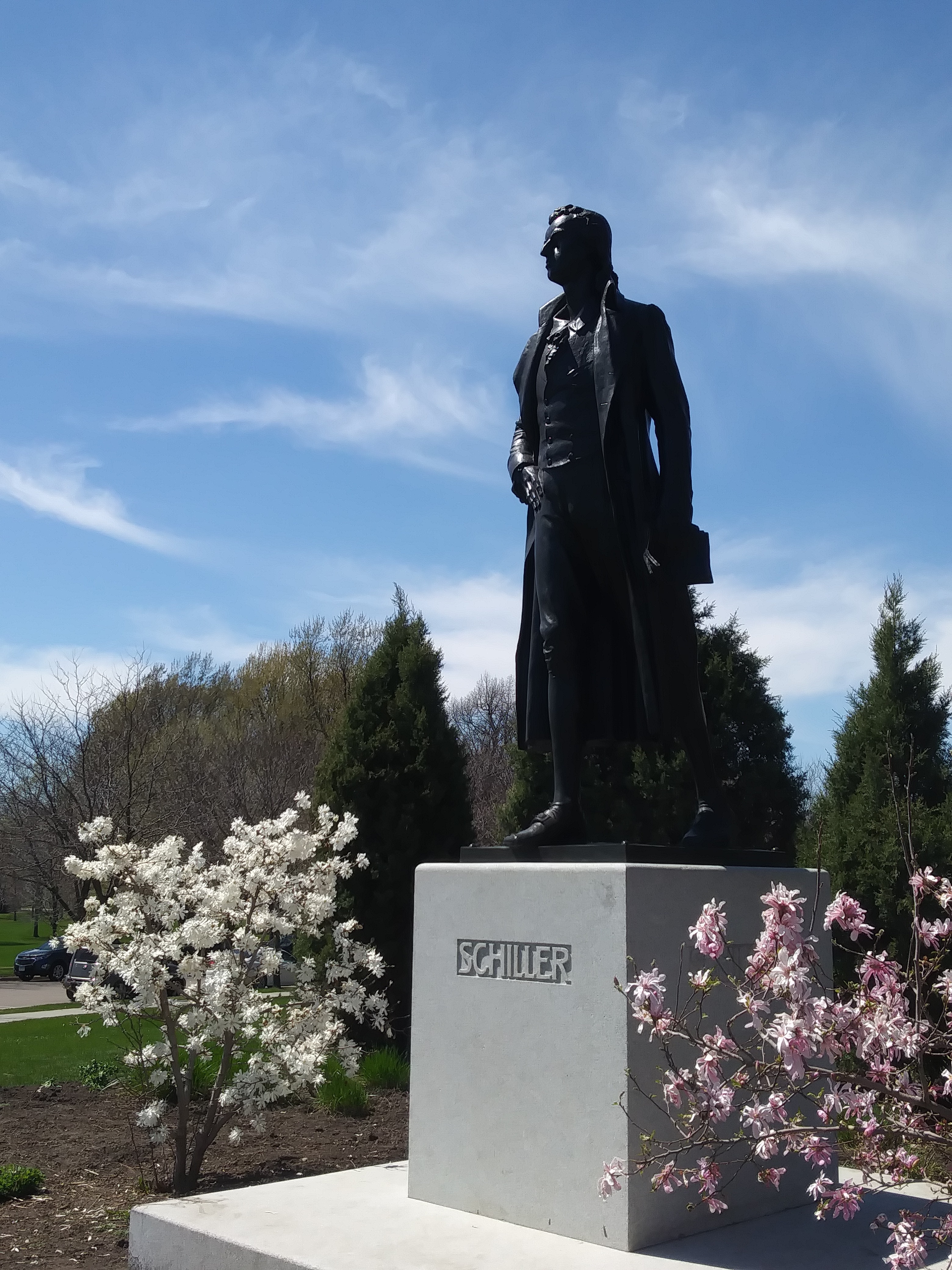MAY 5, 2019 – An urban gem lies near the center of St. Paul, Minnesota. Founded in 1873 and now encompassing hundreds of acres, Como Park includes a zoo, pools, fountains, picnic grounds, mini-golf, a ski center, a butterfly garden, a vintage carousel, a kids amusement park, an 18-hole golf course, athletic fields, miles of paved walking and biking trails, sprawling architecturally designed landscapes, a large pavilion offering food/drinks/shows/concerts, a 70-acre lake plied by an array of rented watercraft, and a large conservatory listed on the National Registry of Historic Places and housing wide spectra of flora from around the world.
Instead of bronze statues of Civil War generals astride their steeds, at Como Park you’ll find the bust of a Norwegian playwright (Henrik Ibsen) and a greater-than-life-size statue of a larger-than-life classical German poet, playwright, philosopher, physician, and historian (Freidrich Schiller) . . . oh, and yes, lots of animal sculptures too!
I go to Como Park almost every day. In winter I ski. In spring, summer and fall, I walk over hill and dale. There in the midst of a metropolitan area of 3.8 million people, I find time and space to think, unwind, observe nature, and let my imagination roam free. The experience never fails to renew my soul and rejuvenate my mind.
But something more important is going on at Como Park.
Yesterday, a Saturday, I hiked over to Como at midday and found it full of visitors. This is typical of every fair-weather weekend there. I marveled at the diversity of people, not just by apparent tribe, clan, race, and religion but by their attire, by snippets of conversation, and in many instances . . . by the sheer extravagance of their tattoos. Even on the golf course, though dominated by well-attired whites, I saw a degree of diversity that would have astounded golfers of an earlier era.
I thought about the column by author Tony Horwitz in last Sunday’s Times, in which he talked about Frederick Law Olmsted. Before going into architecture, Olmsted had been a correspondent for The Times. While touring the ante bellum South and meeting people on their home turf, he had hoped to help bridge the divide between North and South. He failed, of course, but out of the experience he discovered the importance of common public space where people of all beliefs and backgrounds could mingle comfortably, reducing the factors that lead to polarization. It is precisely this notion that informed his most noble contribution to society—the design of Central Park in New York City.
It matters little that few of the 2 million visitors to Como Park each year have heard of Schiller or know a tree from a tree fern. What matters is that along the walkways past the statue of Schiller, the trees and the tree ferns, they rub elbows with people from all walks of life.
Olmsted was most definitely on to something.
© 2019 Eric Nilsson
